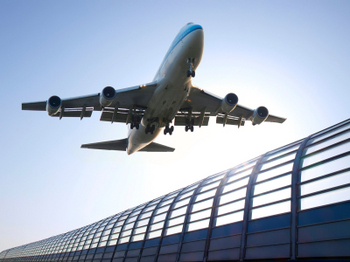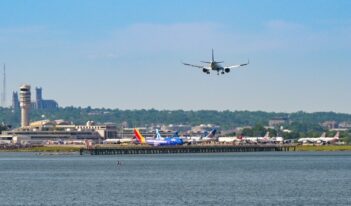
International fuel efficiency standards for aircraft near enactment.
Despite advancements in international climate governance, including the recent Paris Agreement, regulation of one increasingly significant contributor of carbon emissions has lagged: the aviation industry. This will most likely change soon, however, as an agreement sponsored by the United Nations (UN) moves closer to adoption.
A specialized UN agency called the International Civil Aviation Organization (ICAO) is overseeing the effort to set the first-ever, international binding fuel efficiency standards for new aircraft. The standards, which call for fuel cuts of about four percent, cleared a major hurdle in February of this year when all 170 international aviation experts on an ICAO committee agreed to send the proposal to the agency’s governing board for formal adoption. Following the pattern with other energy-saving rules, the new aircraft efficiency requirements would take effect gradually; new airplane designs would be required to incorporate the fuel efficiency standards by 2020, and manufacturers could not produce non-compliant aircraft after 2028.
The ICAO emphasized the flexibility built into the proposed standards, noting structural changes to aircraft designs could help cut emissions. Winglets– curved tips at the end of each wing – offer one example of a design change that some airlines, including Southwest, have already adopted. Winglets can lower an aircraft’s fuel consumption by three to five percent. Opting for more efficient engines is another design change that would help cut an aircraft’s emissions.
Still other possible emissions-reducing designs are also already in development by aircraft manufacturers, such as designs that would improve aerodynamic flow or incorporate propulsion technology. Boeing, for example, through a partnership with NASA’s Environmentally Responsible Aviation Project, has designed a more aerodynamic tail and rudder, as well as new coatings for aircraft wings, which can reduce drag and therefore improve fuel efficiency.
Many airlines have already integrated commitments to reducing their carbon footprint into broader corporate social responsibility plans. Delta Airlines, for example, has included a carbon calculator on their website and has partnered with the Nature Conservancy to invest in protecting forests, which help absorb carbon emissions. British Airways highlights its Customer Carbon Fund, donations to which finance alternative energy projects; it also has publicly committed to supporting “appropriate government regulation.” A number of options are available for concerned passengers to invest in carbon offset purchasing. For example, some frequent fliers donate to environmental organizations that plant trees to capture and store carbon emissions, thus balancing out customers’ flight emissions.
Even though airlines and plane manufacturers are already taking steps to address climate change, the proposed ICAO standards highlight the importance of aircraft design modifications. First, the pace of growth in the aviation industry means its share of total global carbon emissions continues to increase. Currently, aviation contributes about two percent of global emissions, but it makes up twelve percent of emissions from the transportation sector.
Furthermore, the ICAO projects the number of commercial aircraft in service to double by 2030. Aviation’s share of emissions will likewise increase, possibly even threefold without efficiency improvements, according to the International Council on Clean Transportation. Faced with such prospects for growth, the ICAO standards would establish a common emissions baseline for all airlines. Uniform standards also matter because “business needs a level playing field to innovate,” according to Tensie Whelan, a professor at New York University’s Stern School of Business. Setting minimum efficiency requirements helps channel industry efforts toward lower-emitting aircraft designs and spreads environmental responsibility among airlines more evenly.
The global nature of the aviation industry means that many nations are waiting for the ICAO to act before promulgating their own rules governing aircraft emissions. Formal ICAO approval of the aircraft fuel efficiency standards will likely trigger a ripple of associated rules at the national level. Unlike recent regulations governing emissions from vehicles and power plants, the U.S. Environmental Protection Agency has delayed crafting its own aircraft fuel efficiency standards pending action by the ICAO.
The White House and the European Commission have praised the recent ICAO committee-stage approval of the fuel standards, highlighting the projected emissions reductions between 2020 and 2040 would equate to “removing over 140 million cars from the road for one year.”
Yet some environmental groups, including the Arizona-based Center for Biological Diversity, have protested that the new standards amount to action that is both too little and too late. Because the ICAO standards exempt aircraft already in use, the Center noted, it could take decades for the efficiency improvements to cover the entire global airplane fleet.
The thirty-six members of the ICAO governing council are slated to vote later this year on whether formally to approve the emissions agreement.



